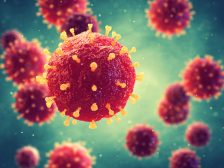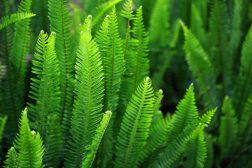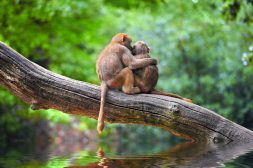
Biosphere
n., [ˈbaɪəˌsfɪə)]
Definition: the part of the earth where living things exist.
Table of Contents
What is biosphere? The biosphere is that part of the Earth where living things thrive and live. It is the portion of the planet that can sustain life. The Earth has three other spheres: the atmosphere, the lithosphere, and the hydrosphere. However, not all of them are inhabited by living things. The portions or regions where organisms are found are collectively called the biosphere. Thus, it can also be said that the biosphere is the sum of all the ecosystems on Earth.
The word biosphere came from the Greek “bios” that refers to “Life” and “sphaira” that refers to the Earth’s shape. The term was first used by an English- Austrian scientist, Eduard Suess in his four-volume book named “The Face of Earth”. In this book, he explained the relations of living things as supported by the Earth.
Biosphere Definition
The biosphere is a term that encompasses all the ecosystems on Earth. It, therefore, includes both non-living elements (like sunlight and water) and living organisms.
What is biosphere? Biosphere refers to the areas or the regions of the Earth possessing life. It is one of the distinguishing features of the Earth from the other planets.
The Earth consists of four spheres, namely (1) biosphere, (2) atmosphere, (3) lithosphere (geosphere), and (4) hydrosphere. The biosphere is the part of the Earth that includes all biological communities and their environment. It is part of the earth where life exists. The Earth’s atmosphere is the gaseous portion that surrounds the lithosphere. The lithosphere, in turn, is the part consisting of the Earth’s crust and upper mantle. In other references, instead of the litosphere, the land or terrestrial part is referred to as the geosphere, which, in contrast to lithosphere, includes the core, apart from the crust and the mantle. The hydrosphere refers to all the waters on the Earth’s surface. Some references consider the term synonymous to the ecosphere, which, strictly speaking, pertains to all these spheres interacting with one another in a closed system.
The biosphere is the part of the earth where living things exist. It encompasses all living things living in the lithosphere, atmosphere, and hydrosphere. There are also artificial biospheres that have been made mainly for research and investigation, such as Biosphere 2, which is by far the largest closed ecology system ever built by mankind. Etymology: from bios-, meaning life + sphere.
Origin and Evolution of Biosphere
About 3.8 billion years ago, the early prokaryotes thrived in a biosphere without oxygen. Eventually, some of these organisms evolved into ones capable of utilizing light, water, and carbon dioxide to create chemical energy-rich compounds while producing oxygen molecules as a byproduct. This process of manufacturing their food using light energy is now commonly referred to as photosynthesis and the organisms capable of this are called autotrophs. And so from the single-celled, e.g. algae, to multicellular autotrophs, such as vascular plants, more organisms, therefore, were able to utilize the carbon dioxide in the atmosphere and eventually provided the atmosphere with oxygen.
Soon, the increased amount of oxygen in the atmosphere led to greater biodiversity as aerobic organisms existed and evolved. This allows the biosphere to sustain more complex lives like vascular plants, animals, and humans to survive in the presence of oxygen. And so to answer the question: “how is biodiversity related to the biosphere” — the answer is quite simple. It created a “healthy” biosphere teeming with different groups of organisms. By healthy, it means various groups are able to acquire different ecological niches.
The autotrophs act as the producers of the food chain. Heterotrophs, which are organisms that are unable to produce food the same way autotrophs can and therefore have to consume other organisms, take the role of natural biological controls. Heterotrophs that feed solely on plants are referred to as herbivores. Those that feed solely on animal meat are called carnivores whereas those that feed on either plants or animal meat are called omnivores. Another important ecological niche is the decomposers. These organisms decompose dead organisms or decaying tissues or converting organic matter into simpler compounds or substances that nourish the Earth. For example, fungi decompose dead plant or animal material. They break down cells of dead plants and animals into simpler substances, which become organic nutrients available to the ecosystem.
Components of Biosphere
What is the biosphere made of? What are the 3 parts of the biosphere? The biosphere consists of three components: (1) lithosphere, (2) atmosphere, and (3) hydrosphere. However, not all of them have living things thriving or inhabiting them. The portions where life is found and sustained are the only ones regarded as parts of the biosphere. For example, the part of the sky where birds are seen flying is part of the biosphere. In contrast, higher up the atmosphere that cannot sustain life is not considered part of the biosphere.
Abiotic components
Below is the description of these three abiotic components of the biosphere:
Lithosphere
The lithosphere is known as the terrestrial component of the biosphere. For instance, it contains solid landmasses like our continents and islands.
The part that does not sustain any life, and therefore, not a part of the biosphere, is its lower mantle and core. All the other parts aside from this support lives, from the smallest bacteria to the large mammals and tall trees, by providing them shelter, and food.
Atmosphere
The atmosphere is the gaseous covering above the Earth. It contains different gases like carbon dioxide, oxygen, and other gases to help living organisms like plants, animals, and humans sustain life. However, the upper region of the atmosphere has a low composition of oxygen; that is why it is possible to find the flying birds under the region of 200 meters of the Earth. The atmosphere that is part of the biosphere plays a specific role in protecting living organisms from the sun’s harmful ultraviolet radiation apart from providing them gases for respiration.
Hydrosphere
The hydrosphere refers to all the waters on Earth. Thus, it is also called the aquatic region. However, it also includes solid forms, like glaciers. The hydrosphere where life is sustained plays an important role in regulating the temperature on Earth. Moreover, it supplies the water necessary for all living things.
Biotic components
As for the biotic components, they include plants, animals, and microorganisms. These biological components are also the builder of the food chain of the ecosystem.
Plants
Plants are the primary producers. They produce their food through photosynthesis. Moreover, they are also known as autotrophs. They also take part in recycling waste material. However, they are the only primary source for every living organism, including animals and humans.
Animals
These are the consumers. They cannot produce their food from inorganic sources. They depend upon other sources like plants or other small animals. They are also known as heterotrophs. The food they intake is used to release energy and store it for future use. The energy is used for growth and development.
Microorganisms
Microorganisms are a major part of the ecosystem. They include fungi, algae, bacteria, viruses, etc. Moreover, they serve as decomposers by decomposing the amount of waste or dead materials. They use this process of decomposing as their food source.
Organizational Structure of Biosphere
The biosphere is mainly described by the reference of the whole life and living organisms around the Earth. It consists of five levels of organizational structure:
(1) Biomes
The large biosphere is divided into large parts of biomes. Scientists classified biomes into five different types: tundra, grassland, forests, deserts, and aquatic biomes. Rivers, lakes, seas, oceans, and other aqueous habitats are inhabited by a large diversity of plants and animals. Conversely, desserts are the driest areas of the Earth with the lowest measurement of rain per year. Grasslands cover the green areas of the Earth. However, it experiences moderate rainfall but not enough to grow large trees. Forests are areas dominated by large trees. Tundras are the vast treeless Arctic region wherein the subsoil is permanently frozen.
(2) Ecosystem

The ecosystem is made up of a biological community and the physical environment. And so it includes both the biotic and abiotic factors. The living things and their physical environment function together as a unit. Four types of ecosystems are terrestrial, freshwater, marine, and artificial. The terrestrial ecosystem is the ecosystem occurring on land and is exemplified by the grassland ecosystem and the forest ecosystem. The freshwater ecosystem is an aquatic ecosystem and exemplified by lentic and lotic ecosystems. The marine ecosystem is a saltwater ecosystem and therefore found in seas and oceans. The artificial ecosystem is a man-made system, such as a terrarium.
(3) The community of Species
As the biosphere shows wide diversity, different species build up the community. These species survive in the areas where abiotic factors like temperature, ph, and nutrients are tolerable or optimum. A biological community, though, is defined as the assemblage of interacting organisms (either of the same or different species) coexisting in a particular area and time.
(4) Population
All the members of the particular species living in the single habitat are known as the population. The population size can vary from a few to thousands of members. Overpopulation is a condition wherein the population of a species exceeds the carrying capacity of an ecological niche. A population decline, on the contrary, is one in which the size declines. The reduction of population size for a short period of time is referred to as a population bottleneck.
An excess of population size may lead to a struggle for survival. Species will compete against everybody for limited resources. Thus, various symbiotic relationships have been established. Those that tend to give and take in a relationship are said to be in a mutualism whereas those that tend to cause or bring harm to other organisms may be in a parasitic or predatory kind of symbiosis. This is also where natural selection comes into place. Species that have useful or beneficial variations are “ favored ” and so are able to thrive and reproduce over those that have less favorable traits.
(5) Organisms
The organisms are the living entities of the biosphere. One of the features that made them distinct from non-living material is possessing a cellular organization and system that enable various life processes. Inside the cell is a genetic material that carries the code for all biological activities and for reproduction. . They can be eukaryotes and prokaryotes. For instance, humans, plants, and animals are eukaryotes, and bacteria are prokaryotes. They can be identified by the presence of an endomembrane system and internal compartmentalization leading to the formation of different organelles. Eukaryotes possess such features whereas prokaryotes don’t.
Factors Affecting Biosphere
The biosphere around the Earth is always changing by the living and non-living things. Different factors are affecting the biosphere and the activities of the living organisms covered by the ecosystem. The following three factors are affecting the biosphere in different ways:
- Earth tilting. The tilting of the Earth affects the biosphere largely. As it makes one side of the Earth cooler for some time whereas the other side remains warmer for a period. The seasons are one of the physical factors that determine the types of species that will thrive in a particular region.
- Natural disasters. Natural disasters can leave a huge and long-lasting impact on the biosphere. Such disasters like volcano eruption, earthquakes, flood, etc., destroy the biosphere. The rock, water, lava, and other possible things ruin the ecosystem.
- Some smaller factors. The other smaller factors, like the change of climate, water, erosion of the soil, or any other kind of change, affect the biosphere and disturb different species’ lives.
Importance of Biosphere
The biosphere is the connection between the healthy life of the living organisms and their interactions. The little change in the biosphere can cause a large impact on the lives of living organisms. However, this connection makes the biosphere important for every living thing. Some of them are listed below:
- Promote life on Earth. The main reason and importance of the biosphere are that it promotes life on the Earth. Adapting to various environmental change, favorable climatic conditions, and the source of energy as food, all the living organisms on the Earth uphold the life on earth surface:
Organic matter: - The biosphere helps in recycling nutrients, like oxygen and nitrogen, to sustain life on Earth.
- Provide food or raw material. Every living thing needs food to survive; thus, the biosphere plays an important role in providing food to different animals and plants.
Biosphere Facts
There are many interesting facts and figures regarding the biosphere. Some of them are as follows:
- The biosphere evolution through the process of biopoiesis and biogenesis. Biopoiesis is known as the process of evolving life from the non-living thing, whereas biogenesis refers to the process of life evolving from the living matter.
- Scientists have estimated the total amount of 8.7 million different species in the biosphere. About 2.2 million live under the water and 6.5 million are on land.
- The actual depth of the biosphere remains unclear. It is estimated that some of the fishes live under 8,300 meters deep.
- Earth’s natural biosphere is known as biosphere 1. However, some artificial or human-made biospheres like Biosphere 2 and Biosphere 3 have been created primarily for research purposes.
- The hydrosphere is the largest part of the biosphere. It covers 71% of the Earth’s surface.
- The biosphere is estimated to be 21,500 meters from the Earth’s surface to the deep in the ocean.
Biosphere Reserve
The life and the future of the biosphere depend on the activities and the interaction of the people with the environment or their habitats. For example, the biosphere and the life of species may disturb either by increasing or decreasing oxygen or carbon dioxide in the atmosphere. It is also caused by human activities like burning forests, pollution, and others.
The first biosphere was found in Yangambi, the Democratic Republic of Congo. However, there are 563 different biosphere reserves around the world. Moreover, scientists have found a new biosphere in Yayu, Ethiopia. In addition to it, they will be using those reserves for agriculture.
Some of the examples of biosphere reserves include:
- Gran Arenal in Autralia
- Fuerteventura in Spain
- UNESCO biosphere reserves (see video below to learn about it and how it works)
Example of the Biosphere
The natural biosphere of the earth is called biosphere 1. However, due to human’s curiosity, they have built an artificial biosphere known as biosphere2. Biosphere 2 is known as the human-made laboratory in Oracle, Arizona. The initial purpose of the project was to study the different factors and carry out relevant information. This was made from 1991 to 1994. They have made it like a large greenhouse in terms of structure. Different groups of people just tried to live under the facility and work on it.
Biosphere 2 was supposed to be the mission of 100 years but unfortunately failed within four years. However, in these four years, the five biomes have been spread over the biosphere, and scientists have to face challenges and, unfortunately, have to close the project.
Moreover, it is still open to research work and tours. You can easily take a tour of the area and research the biosphere’s different parts and factors.
Try to answer the quiz below to check what you have learned so far about biosphere.
References:
- Alfons J. M. Stams., (2017) Quantifying the Importance of the Rare Biosphere for Microbial Community Response to Organic Pollutants in a Freshwater Ecosystem. American Society for Microbiology Journals. 10.1128/AEM.03321-16.
- Michael B. Thompson., David M. Gates., John N. Thompson. (2020). Biosphere.Encyclopedia.Britannica. Link
©BiologyOnline.com. Content provided and moderated by BiologyOnline Editors.








